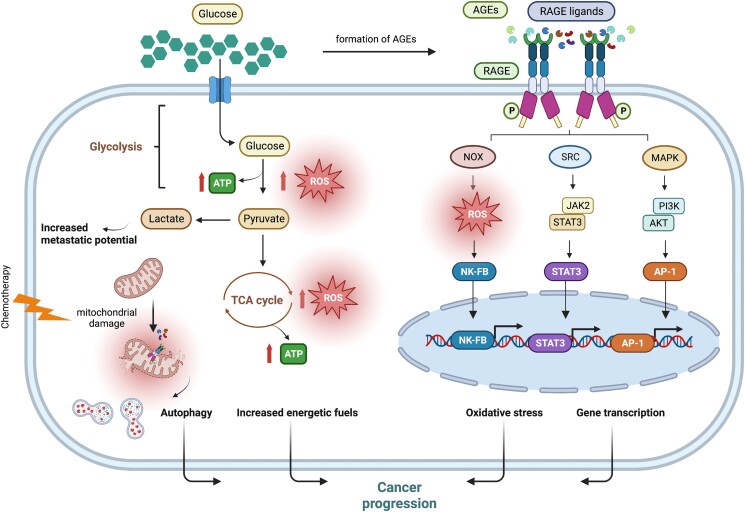Figure 2.
RAGE-dependent regulation of metabolic pathways toward cancer progression. In cancer cells, persistently elevated glucose levels enhance glycolytic flux, which prompts the generation of ROS, directly implicated in the activation of RAGE. Hyperglycemic environments also promote the formation of AGEs, which bind to and activate RAGE. RAGE ligands released from dying cancer cells as a consequence of chemotherapy damage activate RAGE signaling toward cancer progression. Activation of mitochondrial RAGE enhances ATP production and fosters the generation of ROS, setting the stage for mitochondrial fission and autophagy. Abbreviations: AGEs, advanced glycation end-products; AKT, protein kinase B; AP-1, activator protein 1; ATP, adenosine triphosphate; ERK, extracellular signal–regulated kinase; JAK, Janus kinase; MAPK, mitogen-activated protein kinase; NOX, nicotinamide adenine dinucleotide phosphate oxidase; NF-κB, nuclear factor kappa-light-chain-enhancer of activated B cells; PI3K, phosphatidylinositol 3-kinase; RAC1, ras-related C3 botulinum toxin substrate 1; RAGE, receptor for advanced glycation end-products; ROS, reactive oxygen species; STAT, signal transducer and activator of transcription; TCA cycle, tricarboxylic acid cycle.

